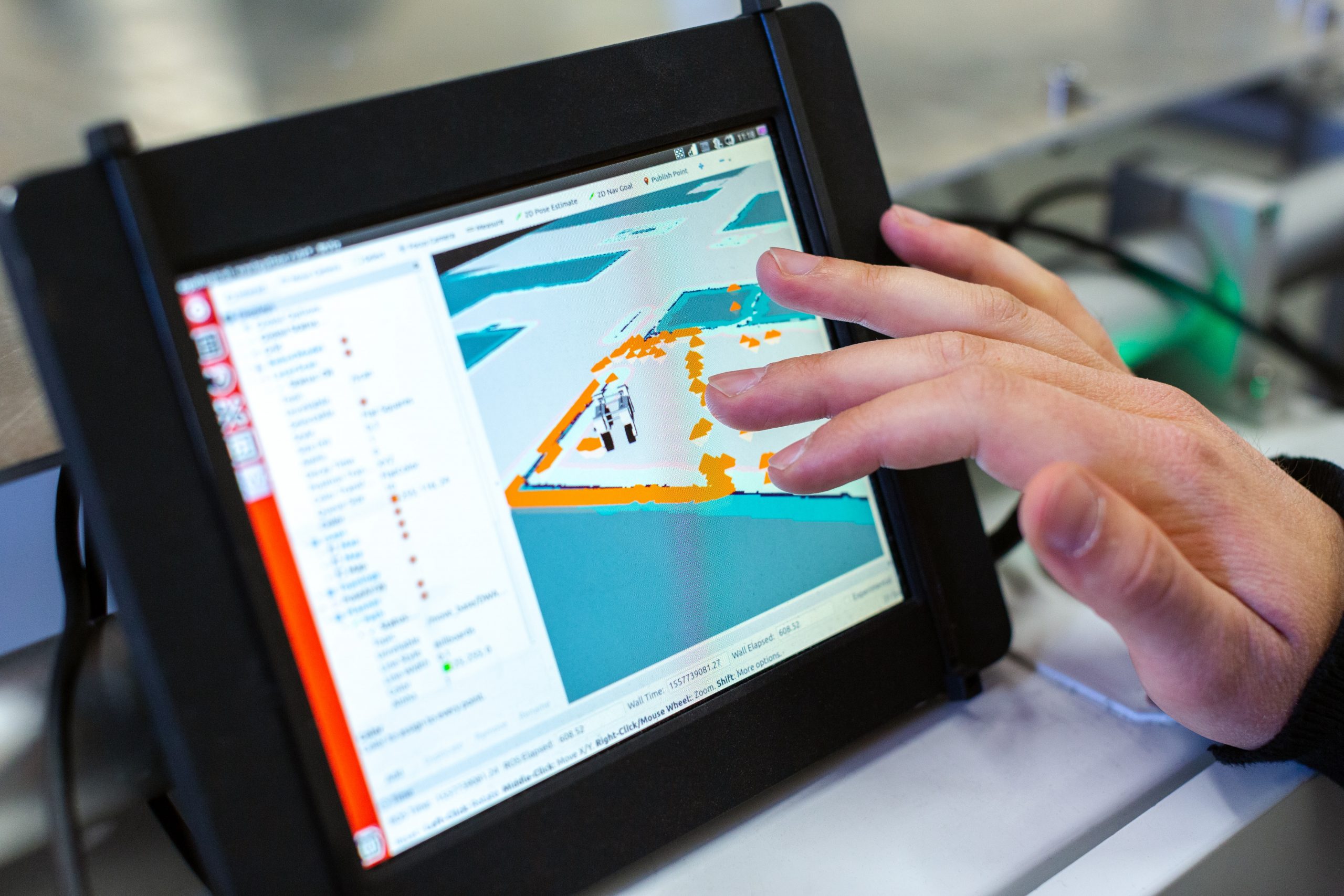In today’s competitive business landscape, artificial intelligence (AI) has emerged as a powerful tool that can revolutionize industries and drive growth. However, the development and adoption of AI solutions come with inherent risks and uncertainties. To mitigate these risks and maximize the potential benefits, it is crucial to create an AI proof of concept (POC) before fully committing resources to a project. We at Wesoftyou understand the importance of AI POC in risk management and have extensive expertise in software development to guide you through this process.
Understanding the Concept of AI Proof of Concept
Before delving into the specifics, let’s clarify what we mean by AI proof of concept. In simple terms, an AI POC is a small-scale version of an AI project that allows you to validate the technical feasibility and value proposition of your idea. It serves as a prototype, giving you a glimpse into what the final AI solution could achieve. From our experience, embarking directly on a full-scale AI development without conducting a POC can lead to unnecessary risks and resource wastage.
Defining AI Proof of Concept
AI POC involves carefully designing experiments that test the viability of your AI concept. This includes defining clear success criteria, selecting appropriate data sets, and utilizing suitable AI algorithms. By setting up controlled experiments, you can evaluate whether the AI solution performs as expected and meets the desired objectives.
Importance of AI Proof of Concept in Risk Management
Creating an AI POC is crucial for effective risk management in AI development and adoption. It allows you to identify and address potential challenges early on, saving you valuable time and resources. By testing your AI concept in a controlled environment, you gain insights into the technical feasibility, scalability, and performance of your solution. This knowledge empowers you to make informed decisions and adjust your plans accordingly, minimizing the risks associated with implementing AI at scale.
Furthermore, conducting an AI POC enables you to gain a deeper understanding of the limitations and constraints of your AI solution. It provides an opportunity to explore different scenarios and edge cases, ensuring that your AI system can handle a wide range of inputs and produce reliable outputs. This iterative process of testing and refining helps you fine-tune your AI model, making it more robust and reliable.
Moreover, an AI POC allows you to gather valuable feedback from stakeholders and potential users. By involving them in the early stages of the development process, you can incorporate their insights and preferences, ensuring that the final AI solution meets their needs and expectations. This collaborative approach not only enhances the quality of your AI system but also increases the chances of successful adoption and user satisfaction.
Steps to Create an Effective AI Proof of Concept
Now that we understand the importance of AI POC, let’s explore the essential steps to create an effective POC.
Embarking on the journey of creating an AI Proof of Concept (POC) opens up a realm of possibilities where innovation meets practicality. Each step in this process is crucial in shaping the future of your AI endeavors, and attention to detail is paramount.
Identifying the Right AI Project
Not every problem requires an AI solution. It is essential to identify the right project that aligns with your business goals and can benefit from AI technology. Evaluate potential use cases where AI can add value and solve existing pain points. Consider factors like data availability, complexity, and potential ROI to select a project that justifies the investment in AI development.
Delving into the realm of AI projects requires a keen eye for detail and a strategic mindset. Understanding the intricacies of your business landscape and how AI can revolutionize operations is key to selecting a project that will yield significant results. By meticulously analyzing the potential impact of AI on various aspects of your business, you pave the way for a successful Proof of Concept.
Assembling Your AI Team
An AI POC requires a multidisciplinary team with expertise in data science, machine learning, and software development. Collaborate with experts who understand the nuances of AI algorithms and can translate business requirements into technical solutions. At Wesoftyou, we have a team of experienced professionals ready to assist you in building your AI dream team.
Building a proficient AI team is akin to crafting a masterpiece – each member brings a unique skill set that contributes to the collective brilliance of the project. From data wizards who unravel insights to coding maestros who breathe life into algorithms, assembling a team with diverse expertise is the cornerstone of a successful AI POC.
Setting Realistic Goals and Expectations
When creating an AI POC, it is crucial to define clear and realistic goals. Determine the key performance indicators (KPIs) that will help you assess the success of your POC. Establishing quantifiable metrics allows you to measure progress accurately and make data-driven decisions. Keep in mind that the POC’s primary objective is to validate your concept, not to achieve perfection right away.
Setting sail on the AI POC journey necessitates a compass of realistic goals and expectations. By charting a course guided by measurable KPIs and a pragmatic outlook, you navigate through uncharted waters with a clear vision of success. Embracing the iterative nature of POCs, where validation reigns supreme, propels your AI aspirations towards tangible outcomes.
Minimizing AI Development Risks with Proof of Concept
Once you have successfully completed your AI POC, you can confidently move forward with AI development, knowing that you have minimized potential risks. Let’s explore how an AI POC helps mitigate different types of risks.
Reducing Technical Risks
AI projects often involve complex algorithms and data sets, which can lead to technical challenges. By creating an AI POC, you can identify and address technical issues early on. This minimizes the risk of encountering significant roadblocks during full-scale development, where the costs and consequences are much higher. Through rigorous testing and iteration, you can fine-tune your algorithms and optimize your solution for optimal performance.
For example, during the AI POC for a self-driving car project, engineers discovered a technical challenge related to object recognition. The initial algorithm struggled to accurately identify pedestrians in low-light conditions. By conducting the POC, the team was able to identify this issue early on and develop a more robust algorithm that performed well in various lighting conditions. This proactive approach not only reduced the technical risk but also ensured the safety and reliability of the final product.
Mitigating Financial Risks
Investing in AI development without conducting a POC can be financially risky. By creating a POC, you gain insights into the feasibility of your project and the potential return on investment. This knowledge allows you to make informed budgetary decisions and allocate resources more efficiently. Should the POC indicate that the project is not viable or needs significant alterations, you can course-correct without incurring major financial losses.
Consider a company that wanted to implement an AI-powered chatbot to handle customer inquiries. Before diving into full-scale development, they conducted a POC to assess the chatbot’s performance and customer satisfaction. The POC revealed that the chatbot struggled to understand complex queries and often provided inaccurate responses. Armed with this information, the company was able to reevaluate their investment and allocate resources towards improving the chatbot’s capabilities. By conducting the POC, they avoided significant financial risks associated with a flawed product and ensured a higher chance of success in the long run.
Overcoming Operational Risks
Implementing AI solutions can involve significant changes to existing operational processes. Without conducting a POC, you risk disrupting your entire workflow without a clear understanding of the potential impact. A well-executed POC allows you to evaluate how your AI solution integrates with existing systems, identifies potential challenges, and helps you develop effective strategies to overcome them. This ensures a smooth transition to full-scale implementation.
For instance, a manufacturing company decided to implement AI-powered predictive maintenance to optimize their machinery’s performance. Through the POC, they discovered that integrating the AI solution with their existing maintenance systems required additional data collection and analysis. This insight allowed them to develop a comprehensive plan to overcome operational challenges, such as training their maintenance staff on new processes and integrating the AI solution seamlessly into their workflow. By addressing these operational risks during the POC phase, the company was able to implement the AI solution smoothly and achieve significant improvements in their maintenance efficiency.
By now, you can see the importance of conducting a thorough AI POC to minimize risks in technical, financial, and operational aspects. It not only helps you identify and address potential issues early on but also provides valuable insights that guide your decision-making process. With a solid foundation established through a successful POC, you can confidently proceed with AI development, knowing that you have taken proactive measures to mitigate risks and increase the chances of success.
Streamlining AI Adoption through Proof of Concept
Successfully implementing AI in your organization goes beyond development. It requires seamless adoption and acceptance by stakeholders and end-users. Let’s explore how an AI POC can support a streamlined adoption process.
Enhancing Stakeholder Confidence
Adopting AI solutions often involves significant investments and changes in the way business is conducted. Stakeholders need confidence that these changes will deliver the expected benefits. By sharing the insights gained from the AI POC, you can demonstrate the value proposition and potential return on investment. This, in turn, fosters trust and encourages buy-in from key decision-makers within your organization.
Facilitating Smooth Integration
One of the critical aspects of successfully adopting AI solutions is ensuring seamless integration with existing systems and processes. An AI POC helps you identify potential integration points and challenges early on. By addressing integration concerns during the POC phase, you can streamline the integration process during full-scale implementation. This minimizes disruptions and ensures a smooth transition for your organization.
Ensuring User Acceptance
For AI solutions to deliver value, they must be accepted and embraced by end-users. Conducting a POC gives you an opportunity to involve users in the development process and collect their feedback. This user-centric approach ensures that the AI solution aligns with their needs and workflows. By actively engaging with users throughout the POC phase, you increase the likelihood of user acceptance, which is crucial for successful AI adoption.
Moreover, involving end-users in the POC phase allows for a deeper understanding of their pain points and challenges. By observing their interactions with the AI solution, you can identify areas where improvements can be made to enhance user experience and overall satisfaction. This iterative approach not only ensures user acceptance but also fosters a sense of ownership among end-users, as they feel their input is valued and incorporated into the final solution.
Furthermore, the AI POC provides an opportunity to test the scalability and performance of the solution in a controlled environment. By simulating real-world scenarios and stress-testing the AI system, you can identify any limitations or bottlenecks that may arise during full-scale implementation. This proactive approach allows you to address these issues early on, ensuring a robust and reliable AI solution that can effectively handle the demands of your organization.
Evaluating the Success of Your AI Proof of Concept
Once your AI Proof of Concept (POC) is complete, it is vital to evaluate its success and learn from the outcomes. This evaluation process allows you to gain valuable insights and make informed decisions about the next steps in your AI journey. Let’s explore how you can measure the success of your POC and leverage the insights gained.
Key Performance Indicators for AI Proof of Concept
Defining clear Key Performance Indicators (KPIs) at the outset of your AI POC enables you to measure the success and impact of your efforts. These KPIs will vary based on your project objectives and can include metrics such as accuracy, prediction performance, and resource utilization. By analyzing these KPIs, you can determine whether your AI solution meets the desired criteria and provides the expected value.
For example, if your AI POC aims to improve customer satisfaction in an e-commerce platform, you may measure the success by evaluating metrics such as the reduction in customer complaints, increase in positive customer reviews, or improvement in average response time to customer queries. These KPIs provide tangible evidence of the impact your AI solution has on the overall customer experience.
Learning from the AI Proof of Concept Outcomes
An AI POC serves as a learning experience, allowing you to gain valuable insights and uncover potential areas for improvement. By analyzing the outcomes of your POC, you can identify the strengths and weaknesses of your solution and use that knowledge to refine your AI project.
During the evaluation process, it is crucial to involve key stakeholders and gather feedback from end-users. Their perspectives can provide valuable insights into the usability and effectiveness of your AI solution. Additionally, conducting user surveys or interviews can help you understand the user experience and identify any pain points or areas that require further enhancement.
From our experience, iterating and learning from each stage of the development process significantly enhances the chances of success when moving to full-scale implementation. By continuously refining your AI solution based on the outcomes of the POC, you can ensure that it aligns with your organization’s goals and delivers maximum value.
Moving Beyond the Proof of Concept Stage
Once your AI POC has proven successful and met your predefined criteria, it’s time to move beyond the POC stage. Armed with the knowledge gained from the POC, you can confidently embark on full-scale AI development and implementation.
During this transition, it is essential to consider factors such as scalability, security, and integration with existing systems. Scaling up an AI solution requires careful planning and consideration of potential challenges, such as increased data volume, computational requirements, and the need for robust infrastructure.
Leveraging the insights and lessons learned during the POC phase, you can navigate potential risks more effectively and maximize the value of AI in your organization. By collaborating with experienced AI development partners, you can ensure a smooth transition from the POC stage to full-scale implementation, minimizing any disruptions and optimizing the benefits of AI technology.
In conclusion, creating an AI proof of concept is a crucial step in minimizing AI development and adoption risks. It allows you to validate the technical feasibility, value proposition, and potential impact of your AI solution. At Wesoftyou, a leading software development company with a proven track record in AI development, we understand the importance of evaluating the success of your AI POC and leveraging the insights gained to drive your AI journey forward.
Ready to explore the potential of AI in your organization? Contact us for a free consultation or project estimation. Our team of experts at Wesoftyou is here to help you harness the power of AI while mitigating risks and unlocking new opportunities.





















